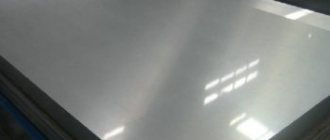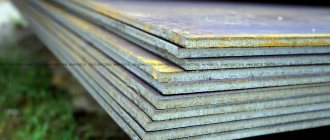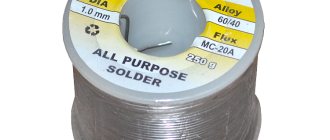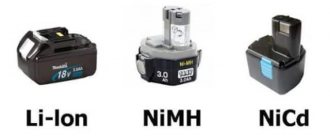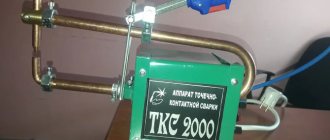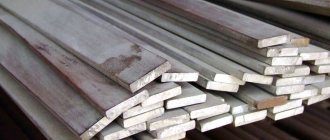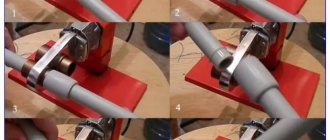How and from what raw materials high-quality cold-rolled steel is produced
Steel blanks from various types of special steels (carbon, alloy, stainless), obtained by hot-rolling, are pickled, treated from carbon deposits and rolled on cold mills. To increase the plasticity of the sheet, heat treatment of the finished steel is used in furnaces at a temperature of 700 degrees.
An important final stage is the training process, which:
- increases the strength of rolled products
- removes wavy deformation of sheets
- makes the surface smooth and uniform
A distinctive feature of a cold-rolled sheet that has undergone a temper training process is the absence of a shear line.
The final products are rolled into rolls or cut into sheets of standard size. The edge can be trimmed or left. Delivery of rolled or sheet products can be carried out at the customer's choice.
Our organization offers rolled GOST steel sheets from leading Russian manufacturers that produce products that have gone through all the necessary technological processes.
How to do it
From the name you can easily understand that in this type of production, steel passes through a rolling mill without heating. Molding is achieved in this case by changing another very important parameter: pressure.
Unlike hot-rolled steel, cold-rolled steel uses higher-quality steel grades. These are, as a rule, carbon, alloyed and highly alloyed, corrosion-resistant, heat-resistant grades, which are described by GOSTs and can be used in a wide variety of industries.
The most common types of production today are roll and sheet. Accordingly, the most common types of products are rolls and sheets. Moreover, the latter are derived from rolls. Both are quite conveniently transported to the place of use.
What parameters affect the cost of steel sheet
Firstly: overall dimensions, sheet steel thickness, material of manufacture
Second: surface layer quality: glossy, rough, matte
Thirdly: flatness - the presence of convex and concavity on the surface of cold-rolled steel. Flatness can be normal, improved, or high.
Fourth: edge - trimmed or unedged. Cutting edges increase the cost of sheet metal and require careful transportation of the product to its destination.
Fifthly: the special purpose of the purchased cold-rolled sheet GOST
Differences in the production of hot-rolled and cold-rolled steel
Hot deformation is carried out at temperatures exceeding the conditions for recrystallization of the metal and amounting to 60% or more of the melting temperature. The initial workpiece is a slab. At elevated temperatures, the strength of steel decreases, which reduces the force required to give the workpiece the desired dimensions. In the process, new grains are formed, preserving good ductility of the metal. It is difficult to control the final dimensions due to the presence of scale on the surface and volumetric changes during cooling.
Cold rolling is the plastic deformation of a workpiece at room temperature. The workpiece in this case is a hot-rolled sheet. Before processing, it must be cleaned of scale using a shot blasting machine, acids, or a combination of both. At deformation temperatures that are below 30% of the melting temperature, work hardening or strain hardening occurs in the sheet, increasing the strength of the rolled product and reducing ductility. For partial recrystallization of the structure, which makes it possible to slightly reduce the hardness and increase the plasticity, heat treatment is carried out - tempering.
Why buy cold-rolled GOST steel sheet?
The range of applications for cold-rolled sheets is very diverse. It is bought for production:
- various parts by cold stamping - automotive industry, aircraft industry, machine tool industry, household appliances production, instrument making, water transport construction
- corrugated sheets, perforated sheets, wall and roof structures used in construction
- various storage containers, metal structures, warehouse equipment
- products of everyday life - fencing, fences, garages, outbuildings
Indicative properties of cold-rolled sheet, which determine the popularity of its use:
- strength
- plastic
- wear resistance
- first-class surface quality
- appearance
- thermal and electrical conductivity
pros
The advantages of this type of rolled product stem from the grade of steel used in its production and the production method itself.
- Very high strength in all key parameters: bending, tension, tearing. For many industries, for example, the automotive industry, this is an extremely important parameter, because products made from this steel will experience serious loads.
- High production precision and minimum tolerances. The method does not involve major changes in the structure of the metal, so the finished product will not deform when cooling.
- Uniform thickness of sheet or canvas. This is also very useful for stamping and many other applications.
How to buy cold rolled sheet
GOST cold-rolled sheet metal may differ in surface types. There are sheets with glossy, matte and rough surfaces.
Our company supplies cold-rolled sheets, the price of which is the lowest in the Moscow region. The range of sheet metal includes not only cold-rolled products. In Moscow and other regions of the Russian Federation, you can buy rolled metal in any volume at GOST Metal. The company's managers will quickly provide the necessary information, fill out an application, ensure timely delivery of goods, and select high-quality products to suit your budget.
| Loading | Guests | ||||||
| 20 tons maximum per truck | 68 t maximum per wagon | GOST 16523-89 | GOST 19904-74 | GOST 1050-88 | GOST 19904-90 | GOST 9045-93 | |
| Sheet steel GOST from manufacturers | ||||||
| Novolipetsk Metallurgical Plant (NLMK) | Chelyabinsk Iron and Steel Works (Mechel) | Sever-Stal | ArceloMittal | Magnitogorsk Iron and Steel Works | Magpermmet | |
You can buy GOST cold-rolled sheets at a competitive price in the cities of the Moscow region:
|
|
|
|
You can buy sheets of cold-rolled iron in the following cities of Russia:
|
|
|
|
Features of use
The reason for the increase in demand is considered to be higher strength technical parameters than those of hot-rolled products. The economic component is no less important. The costs of producing sheet metal up to 1 mm thick by cold rolling are lower than when using other types of metalworking. Today it is produced from carbon, alloy, high-alloy grades (08yu, 08kp and 08ps) steel, depending on the requirements for the finished product in accordance with GOST 19904-90.
Cold-rolled metal products are produced in thicknesses from 0.25-5 mm with sheet dimensions ranging from 510 by 710 mm to 1250 by 2500 mm. Products with a thickness of 0.25 to 2 mm are often galvanized. Transformer cold-rolled steel is produced with a thickness from 0.28 mm to 0.5 mm with sheet sizes from 0.75 mm per 1 m. Such products must comply with the required standards for the magnitude of magnetic induction and watt losses.
Among metal products, steel 3 stands out - calm. This material belongs to the group of the most expensive among cold steels. There is almost no oxygen in its structure, which increases its homogeneity. The metal is characterized by resistance to corrosion and excellent ductility. Widely used for the production of rigid parts of metal structures and pipeline elements. The material copes well with long-term exposure to aggressive environments.
Features of cold rolled steel
Liquid steel is poured either into ingots, which are transformed on crimping mills (slabs and bloomings) into billets for long and flat rolled products (slabs), or semi-finished products are immediately obtained using continuous casting machines.
Next, the heated slabs are converted on rolling mills into thick (4 mm or more thick) or thin (less than 4 mm thick) hot-rolled sheet (in rolls or cut lengths), which is used for the manufacture of ship hulls, large metal structures and industrial units.
As the applications of steel expanded, the need for wide, thin, light and flexible sheets that could be easily processed, for example by stamping, became increasingly clear. Hot-rolled products were not fully suitable for this. Therefore, metallurgists began to use cold rolling of hot-rolled steel sheets, which were pre-pickled with sulfuric or hydrochloric acid to remove scale.
Ready-made cotton rolls and sheets have a smoother surface and more accurate geometric dimensions. But at the same time, the steel becomes hard and loses its ductility. Therefore, after rolling, the annealing process is carried out in a protective gas environment in bell-type furnaces and continuous annealing units. Before cold-rolled rolls become a finished product, they are subjected to training, that is, another stage of rolling with slight compression. All together allows you to obtain excellent plastic properties and improve surface quality. The finished commercial product can be in the form of sheets, packaged in bundles, or rolls.
In Ukraine today there are two large producers of cold-rolled sheets. This is MMK im. Ilyich and Zaporizhstal, which are part of the Metinvest Group. Cold rolling shop of MMK im. Ilyich operates in conjunction with the 1700 hot rolling mill, which has recently completed a large-scale modernization process. This workshop can produce up to 800 thousand tons of cold-rolled sheets and rolls. Zaporizhstal has two cold rolling shops with a total annual capacity of about 1 million tons. The products they produce are distinguished by a wide range of sizes and brands.
Evolution of flat products
Until the 16th-17th centuries, the production of steel sheets was primarily carried out by blacksmiths. Their products were of low quality, and the volumes were not enough for anything. Therefore, they gradually began to be replaced by rolling mills, that is, mechanized devices that could significantly increase the productivity of the process.
It is believed that Leonardo da Vinci was the first to come up with such a device. A tin rolling press was found among his sketches. However, historians are still puzzling over whether it was his invention or whether the great Florentine simply recorded in his diaries a device that he saw somewhere in the second half of the 15th century.
What is clear is that this technology became widespread during the Industrial Revolution, along with steam engines and the growing demand for metal. Kuznetsov was increasingly forced out of mass metallurgical production. After all, their forged sheets had many disadvantages: from uneven thickness over the entire surface to the impossibility of producing sheets of large sizes.
The first rolling mills consisted of two rolls, between which a steel billet was clamped. Under pressure, plastic deformation of the metal occurred, and it received its final shape. Another name for the process is rolling. At first it used a manual drive, then water power. And at the end of the 18th century, steam rolling mills appeared. Rolling production finally takes its place among the main processes of metallurgy.
And as often happens with the development of technology, then even in such a narrow area as the production of flat products, processes of specialization began. First, hot rolling mills appeared, when a hot billet was rolled between shafts, and already in the 80s of the 19th century, the first cold rolling mills for flat products appeared, which evolved and improved.
